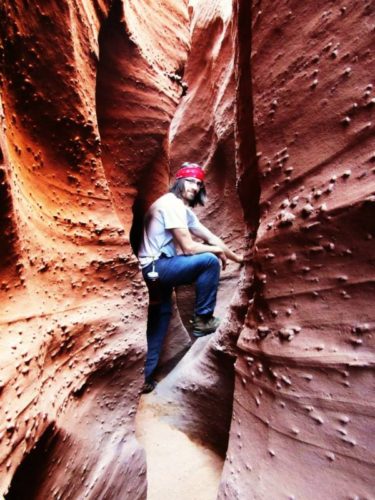

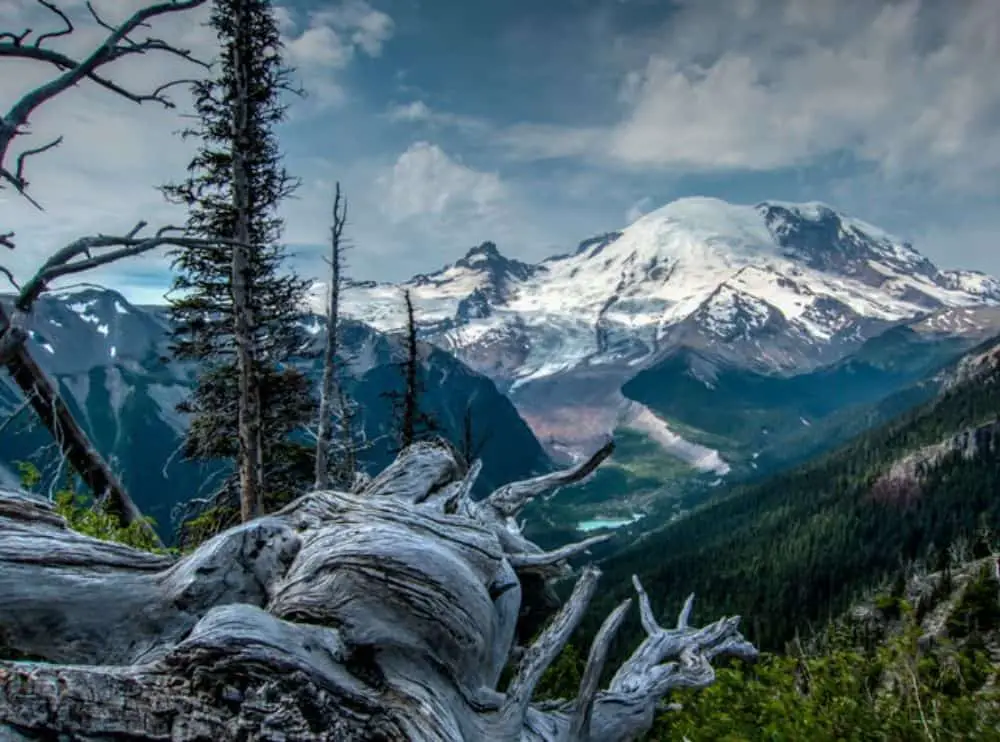
Ever wanted to be on top of the world? Mt. Rainier is about the closet you’ll get. I can’t wait to do it!

I have heard people say that hiking to the summit of Mt. Rainier is an experience of a lifetime. I aspire to do it, but it’s going to take a lot more than dreaming to make this happen. Extensive research, training, and saving is the only way to find myself 14,000 ft. on a mountain with a sunrise that will take my breath away.
Let’s go on the adventure of prepping for this experience. What we will need, where we will stay, and how much this is going to cost is just the beginning of this adventure.
Mountaineering may seem very similar to trail hiking. Still, we need to cover some significant distinguishing differences to know what lies ahead of you.
Trail hiking is what I would consider being moderate and doesn’t require a lot of training. It is a great cardiovascular activity, and you can typically complete trail hikes within a day, with the risks being minimal.
Conversely, mountaineering, also known as mountain climbing, is ascending thousands of miles in hopes of reaching the summit; it is not for the faint-hearted. Climbing Mt. Rainier is no exception.
This climb will take you 3 to 5 days to complete as you gradually ascend 14,411 feet above sea level.
Not many people can say they have made it to the summit of Mt. Rainier. However, outside of bragging rights, the beauty you can experience, and the sense of achievement make this activity that much more appealing.
The task itself is a big one that will ask much of you, but anyone can do it. You have to be at least 18 years of age to climb. If you are younger, then you will need to be accompanied by someone 18 or older. If a four-year-old can get it done in 1995, why not dream big and take it on yourself.
You can bring a group of friends or find a group going. Keep in mind, someone in this group needs to be an experienced mountaineer with crevasse and glacier experience.
There is plenty of preparation emotionally and physically that is necessary before you begin your climb. This insightful article, “Climbing Mt. Rainier – Mental and Emotional Preparation,” takes you through what it is like to attempt Mt. Rainier.
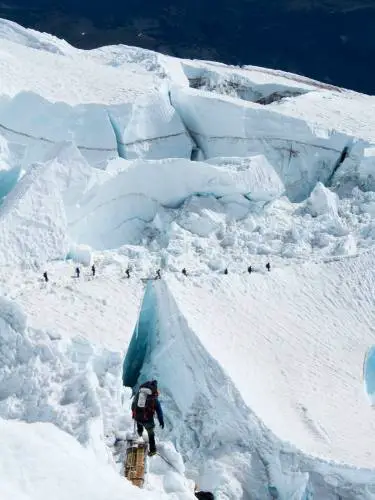
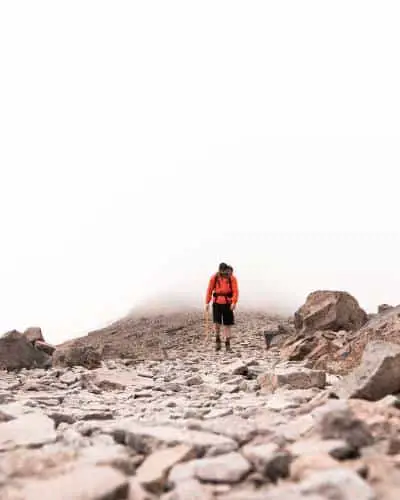
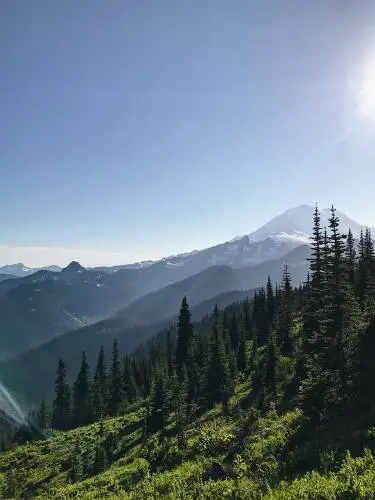
We are talking about Washington, specifically the Pacific Northwest Cascade Mountain Range here, so I hope you enjoy snow and rocks. Though the area around Mt. Rainier is relatively flat with fantastic weather during the warmer months, as you progressively climb the mountain, you will find that the environment changes quickly and creates its own ecosystem.
When you access Mt. Rainier National Park to start your adventure, you will find yourself in the following Mt. Rainier trailhead accessibility areas: Sunrise, Paradise, Longmire, Mowich, and Ohanapecosh.
It is important to note that the higher northwest you go, the colder you can expect it to get.
Weather in the Pacific Northwest is governed by the Pacific Ocean, elevation, and latitude. So rain is no stranger to this region. As you can imagine, rain and snow do not make ideal conditions for climbing up a mountain.
Your best bet is to plan your trip for July-October. July and August are the driest and warmest months. You will see beautiful wildflowers in late August and September, and the waterfalls should not be frozen yet. October is touch and go, so do your research when planning your trip weather should be considered.

Meet Mt. Rainier: Arguably the true crown jewel peak of the Lower 48, even though Mt Whitney boasts a few extra hundred feet. At 14,411 feet, Mt. Rainier dominates the landscape for hundreds of miles. It has the greatest prominence and heaviest glaciation of any Lower 48 peak.
Did I mention this was not for the faint of heart? Good, because you will need to have more than basic navigational skills when climbing Mt. Rainier:
Whether you are an advanced mountaineer or this is your first time scaling Mt. Rainier, there are always risks associated with this task. Unfortunately, packing the essential safety gear to minimize your chances of being in a life-or-death situation does not guarantee your safety.
Your most significant risks include rock and ice falls, crevasse falls, hypothermia, and serac fall. There are ways to lower the chance of these things happening. This is where your equipment and training matter the most.
You’ll need mountaineering boots, crampons, a safety helmet, rope, ice ax, layers to keep you warm, and glacial navigation awareness.
Mt. Rainier is a haven for wildlife, and the various species that dwell there are just as afraid of you as you are of them. Therefore, it is crucial that we respect their home and know how to behave if we encounter them.
While in the park, some wildlife you might encounter, including mountain lions, black bears, bobcats, red foxes, porcupines, and so many birds that I can’t fit in this one blog. Of course, the most feared species are the Black Bear and the Mountain Lion out of that list.
These animals are not looking for a fight and typically will avoid confrontation. However, it is essential to know what to do if you find yourself face to face with one. The National Park Service has a great guide on how to handle yourself in that situation.
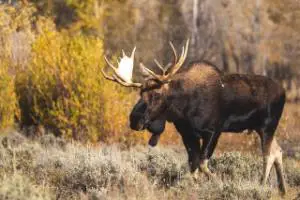

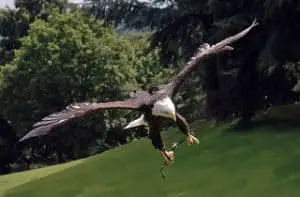
Training to climb 14,411 feet in elevation requires you to have a strong core, balance, breathing techniques, leg strength, endurance, and the ability to carry a 25 to 75-pound backpack for a long-distance are necessary for you to complete this hike.
A good indicator that you are ready for Mt. Rainier is having the ability to hike for 5 to 6 hours, run 5 miles without long breaks, and “can carry a 40-pound pack on a 2,000 ft. elevation hike in about 2 hours”. It would be best if you allowed a few months of training before attempting the summit.
There are so many resources that can help you get in “climbing shape” for your adventure. First, start with smaller hikes with similar elevation gain and conditions. Then, gradually increase your run mileage to 10-15 miles a week.
Merely running isn’t enough though! Do loaded hill climbs to simulate the unique demands of ascending steep terrain while carrying 40-80 lbs of gear on your back.

Load up with a pack 10-20% of your bodyweight (not exceed 40-50 lbs). Walk uphill for 10-20 minutes. Repeat!

Strengthen your core and legs while developing cardiovascular endurance. Try out 2+ hr workouts; you’ll teach your body how to burn fat, not carbs.

Don’t neglect your posterior chain! Your thighs may be burning, but it’s your glutes that develop the power.
The essentials for any mountaineer are the same, no matter where the adventure is. Make sure you are equipped with a map, sleeping bag and pad, gloves, harness and rope, mountaineer boots, crampons, ice ax, helmet, emergency shelter, nutrition, headlamp, hiking socks, and first aid kits are non-compromisable items that must be present during your adventure.
Price:
The essentials you need for climbing Mt. Rainier outside of basic protective gear:
Price:
Food, amenities, and groceries below the high camp if you need last-minute things, but groceries should be less than $300.
Price:
This price will vary depending on if you are taking a road trip or hopping on a plane. However, you can keep your wallet heavy if you plan your trip with friends and split the transportation costs. So go ahead and start the group chat and save some money.
Price:
There are three high camps that you will sleep at, even if it’s a short rest, but it is more of a camp-style instead of lodging. Lodging is available off the mountain in Sunrise or Paradise, with nightly rates starting at $100.
Price:
There is an entry fee; it is about $35 per car.
A wilderness permit is required if you plan to stay in the backcountry; it runs about $26.
Mountaineers must obtain a climbing permit for everyone hiking above 10,000 feet; for 26 and up, it is $52, and 25 and younger is $36.00.
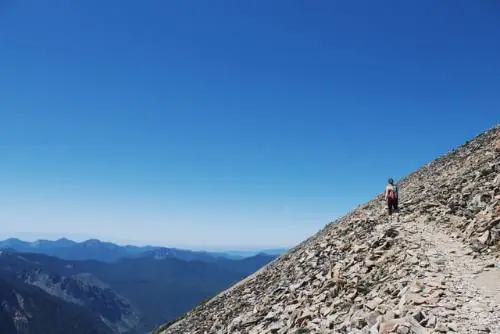
There are plenty of options available for the family in the surrounding areas that don’t require scaling the mountain. However, unless each family member has been adequately trained in the activity’s basic outdoor skills and training, I would not recommend bringing the kids and in-laws.
All mountaineers must be 18 and up to climb Mt. Rainier or be accompanied by their guardian
When nature calls and there are no portable restrooms, I assure you that you won’t find one 10,000 feet above sea level; you want to follow the “leave no trace behind” rule.
See Notes on transportation in the Finances & Budget section.
See notes in the “Where and When to Go?” section.
There are plenty of guided summit trips that you can find by simply googling “mountaineer guide Mt. Rainier.” I would recommend you using this option if you have a lot of first timers in your group.
Copyright 2021 – Adventure on the Cheap (SRVS)
